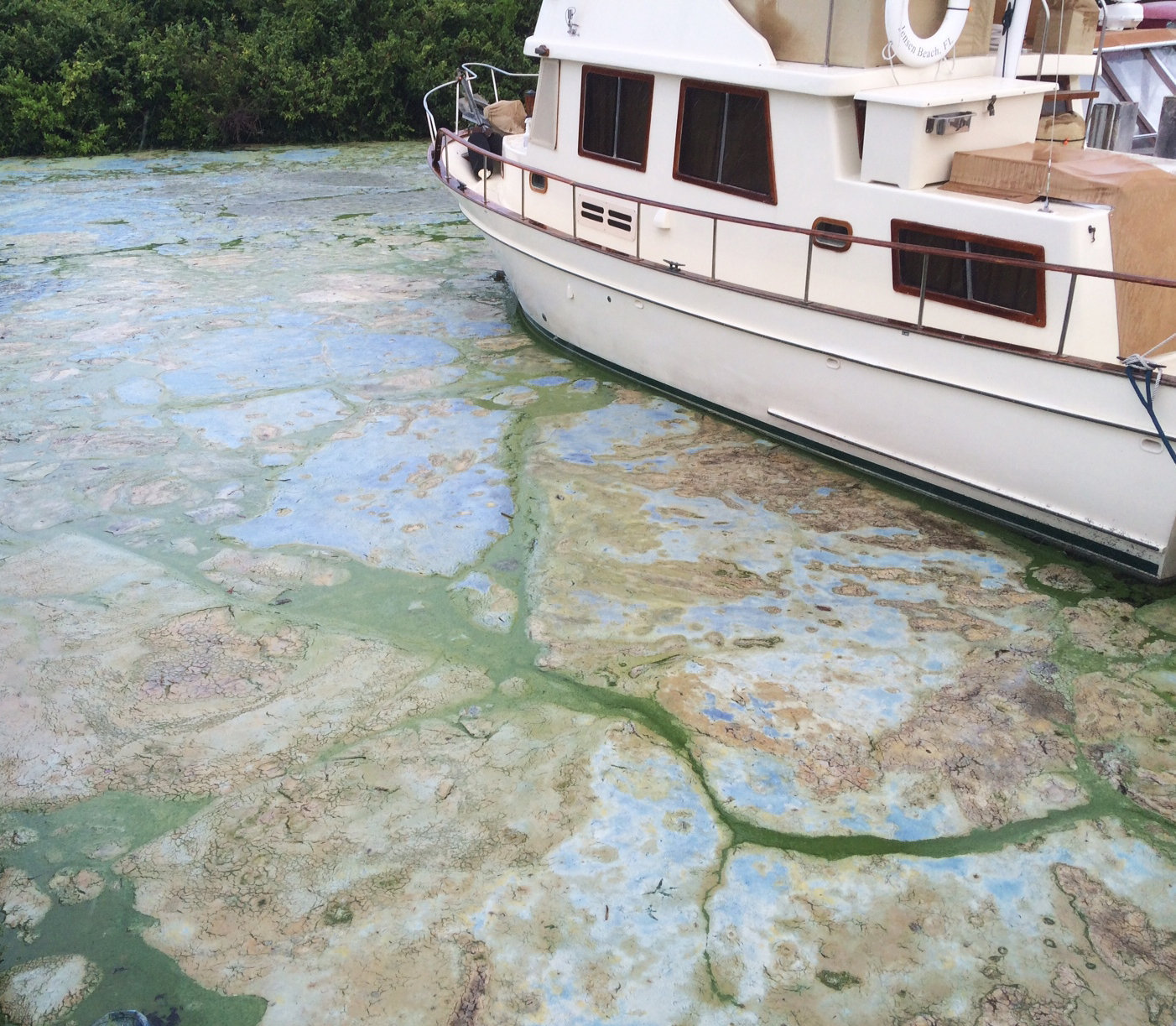
U.S. Sen. Marco Rubio is calling on President Barack Obama to declare a state of emergency to help businesses harmed by the massive algae bloom fouling some of Florida’s southern rivers and beaches.
Rubio on Friday toured a portion of the St. Lucie River where a smelly muck is fouling an area promoted as Florida’s “Treasure Coast.” During a news conference later, he called the impact on tourism, home values and small businesses “catastrophic,” saying he couldn’t think of a precedent anywhere else in the country.
“I hope the president will have an emergency declaration, because that will open up the full portfolio of aid that the federal government can provide local businesses and communities that are being impacted by this,” Rubio said.
Rubio’s Democratic colleague, Sen. Bill Nelson, toured the area Thursday. Both senators have joined Martin County commissioners in calling for the U.S. Army Corps of Engineers to stop the flow of water between the river and Lake Okeechobee. Residents and business owners blame the algae on pollutants streaming from the lake.
After touring the St. Lucie River as it passes through downtown Stuart, Nelson said the problems can be traced to Florida’s history of diverting water to the ocean.
“We need to repair 75 years of diking and draining, but that takes time,” he said. He called on Florida’s Legislature to spend money approved by state voters for environmental projects such as purchasing land around Lake Okeechobee for water storage instead of diverting the funds to pay for administrative costs.
The Army Corps has started reducing the flow of water from Lake Okeechobee. The Corps’ Jacksonville District began the reductions Friday, targeting the Caloosahatchee Estuary and the St. Lucie Estuary, a news release said.
The action comes after Florida Gov. Rick Scott declared a state of emergency over the problem, and as politicians and residents are blaming the federal government.
Multiple Florida lawmakers have asked federal authorities that oversee Lake Okeechobee to immediately stop freshwater releases that coastal communities blame for algae blooms and other environmental damage.
“I would describe them as guacamole-thick. And it stinks,” said Gabriella Ferraro, spokeswoman for Martin County.
The blue-green algae is the latest contaminant featured in yearslong arguments over water flowing from Lake Okeechobee, which is critical to South Florida’s water supply and flood control systems.
At Central Marine boat docks in Stuart, pea-green and brown algae coated the water Thursday and smelled strongly like cow manure. Blooms that started last week in the St. Lucie River continue to spread, threatening Atlantic beaches expecting crowds of families for the holiday weekend.
Sarah Chaney, a receptionist at Central Marine, said boaters and fisherman are canceling reservations after seeing reports of the algae, which she called “horrible and disgusting.”
When Scott declared a state emergency for the area Wednesday, he blamed the federal government for neglecting repairs to the lake’s aging dike that’s considered one of the country’s most at-risk for imminent failure. On Thursday, he amended the emergency declaration, adding Lee and Palm Beach counties to Wednesday’s emergency declaration for Martin and St. Lucie counties. Palm Beach County is located directly south of the existing emergency area, while Lee County is located on Florida’s Gulf coast.
Republished with permission of the Associated Press.




2 comments
Lamont Eason
July 4, 2016 at 9:11 am
Politicians failed to be pro-active before the algae became a problem. It wouldn’t take a soothsayer to know that sewer lines and septic tanks being built would develop leaks with years of use. It wouldn’t take a genius to figure out that the counties needed strict controls over how they disposed of their post-treatment sewer waste. So now that the algae is a crisis, politicians are giving it their attention.
Bill
July 4, 2016 at 4:01 pm
Well instead of blaming everyone under the sun for this pollution I’m gong to give you a solution. There is a bacteria that can digest this muck and odor.
Their using it to treat hog waste in North Carolina and Iowa right now. One gallon can treat ten thousand gallons or more Using this bacteria at the source could make a difference. Treyco.net
Comments are closed.